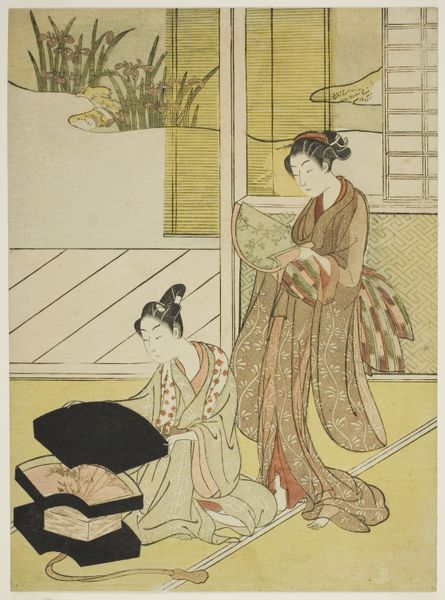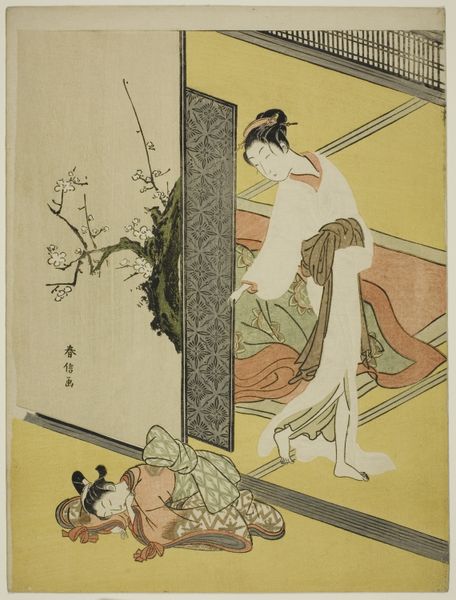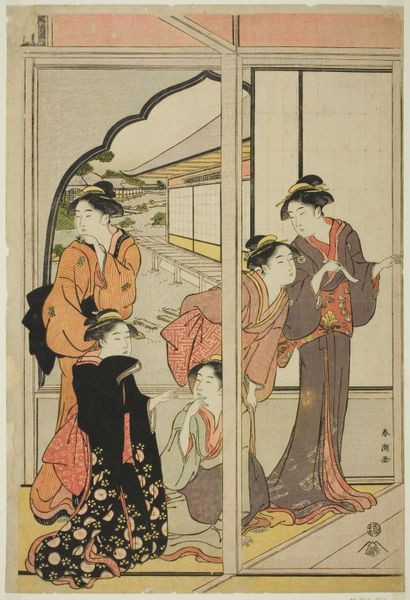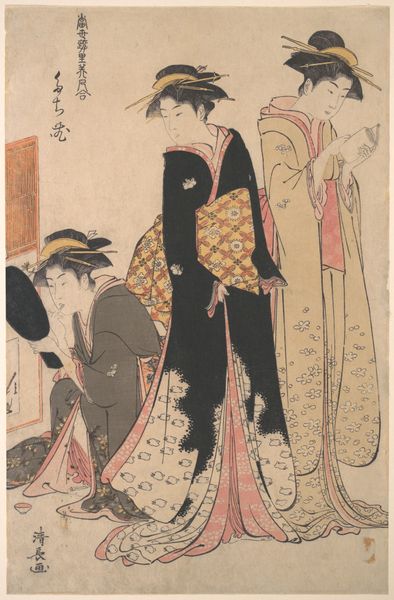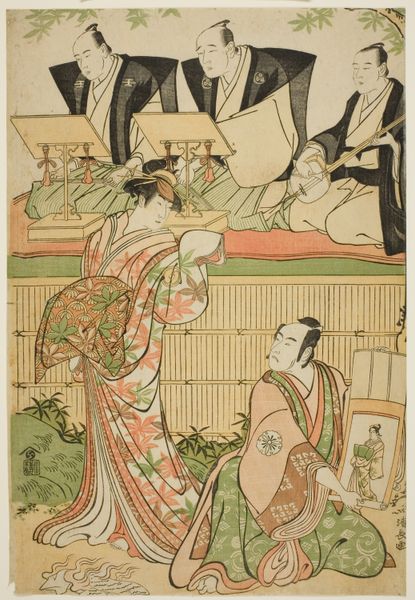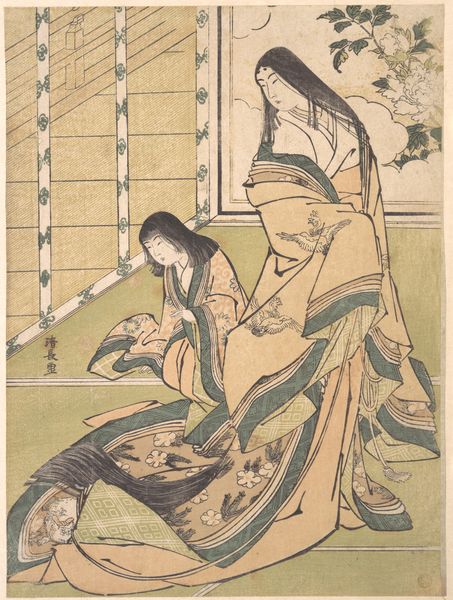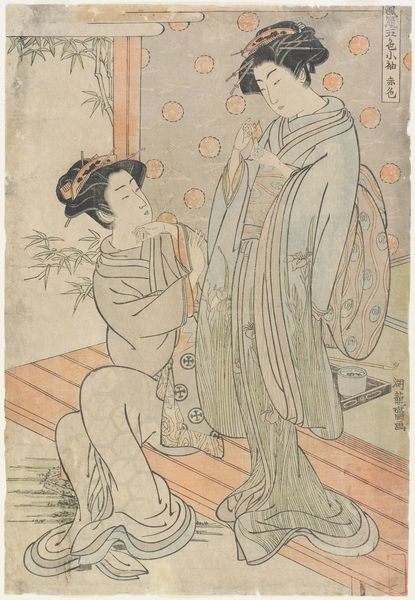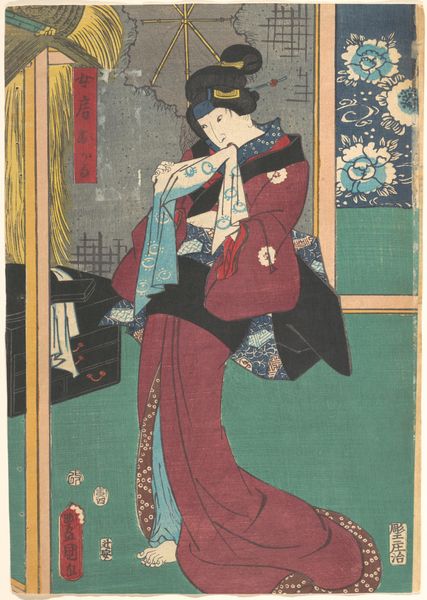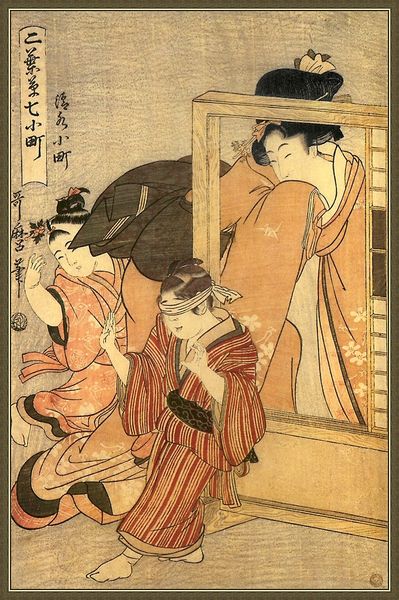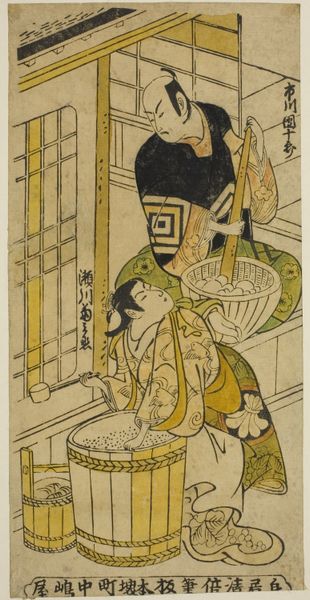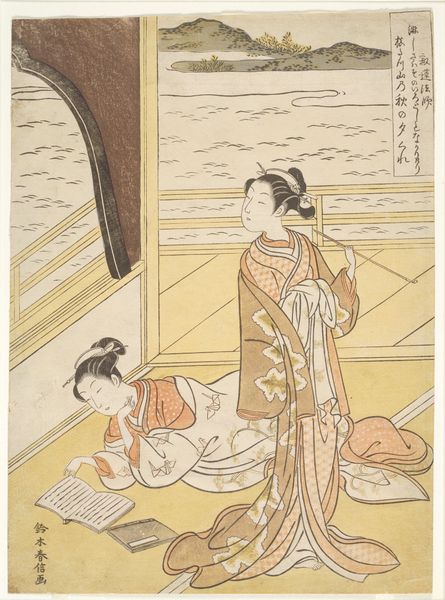
Twee courtisanes en een jongeman onder een muskietennet 1793 - 1956
0:00
0:00
kitagawautamaro
Rijksmuseum
Dimensions: height 377 mm, width 247 mm
Copyright: Rijks Museum: Open Domain
Editor: Here we have "Two Courtesans and a Young Man Under a Mosquito Net," a woodblock print by Kitagawa Utamaro, dating roughly between 1793 and 1956. The scene feels intimate and maybe a little voyeuristic. What strikes you most about it? Curator: I'm immediately drawn to the implied social commentary. Ukiyo-e prints often depict the pleasure districts of Edo-period Japan. While seemingly documenting everyday life, they also offer a window into the complex social structures, gender roles, and economic realities of the time. How do you perceive the power dynamics at play between the courtesans and the young man? Editor: It's interesting to consider. On the surface, it might seem like the courtesans hold the power. They are the subject of the gaze, yet they also seem self-possessed. But is that a deceptive reading, influenced by our modern sensibilities? Curator: Precisely. Consider the economic dependency inherent in their profession, and the limited agency afforded to women in that period. Utamaro, consciously or not, captured a moment rife with tension. The mosquito net itself becomes a metaphor, both a barrier and a frame for observation. It speaks to both intimacy and the transactional nature of the encounter. What do you make of the gazes shared by the subjects? Editor: Well, it looks like each courtesan holds a different expression: interest, exhaustion, contempt, even... their own business on their mind? They avoid looking at us. I guess they're not trying to engage with an audience outside of the mosquito net. Curator: Exactly, consider the audience then! To whom was Utamaro speaking through these images, and what complicities are built into their gaze and consumption of images like these? This makes me think about the layers of visibility and invisibility—the lives of women then and the echoes they find in social structures now. Editor: That really shifts my understanding. It's much more than just a pretty picture. Curator: Indeed. It invites us to critically examine historical power dynamics and their lasting impact on contemporary society. Every aesthetic choice reflects the intersection of politics and social realities.
Comments
No comments
Be the first to comment and join the conversation on the ultimate creative platform.
